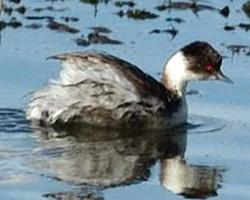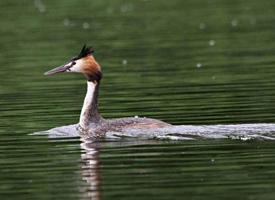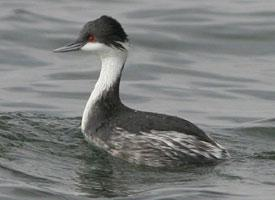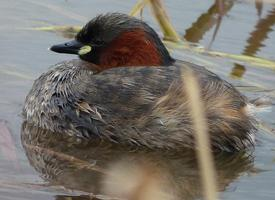
Poids et mesures
| Longueur | de 25 à 27 cm |
|---|---|
| Poids | de 120 à 300 g |
| Envergure des ailes | 40 cm |
Statut de conservation
| Menacé |
Description de l'animal
The Little Grebe, scientifically known as Tachybaptus ruficollis, is a captivating small waterbird that is part of the grebe family. This species, widely distributed across various parts of the world including Europe, Africa, Asia, and the northern regions of Australia, showcases remarkable adaptability to both freshwater and saline environments. Despite its widespread presence, the Little Grebe retains a sense of mystique, often enchanting birdwatchers with its discreet presence and charming behaviors.Characterized by its compact body, the Little Grebe measures approximately 23 to 29 centimeters in length, making it the smallest member of its family in its range. Its appearance is marked by a stout, pointed bill and a relatively short neck, which contributes to its distinctive profile. The adult's summer plumage is particularly striking, featuring a rich, chestnut-red throat and cheeks, contrasting beautifully with its dark, almost black upper parts. The underparts, in contrast, are a lighter, whitish color, providing a stark contrast to the darker tones of its upper body. In winter, the Little Grebe's plumage becomes more subdued, with the vibrant summer colors giving way to a more uniform, drab appearance, predominantly grey and black.
One of the most intriguing aspects of the Little Grebe is its behavior, especially during the breeding season. This bird is known for its secretive nature, often nesting in dense vegetation near water bodies. Its nest, a floating platform of vegetation anchored to underwater plants or other structures, is a marvel of avian architecture. Both parents are involved in the construction of the nest, as well as in the incubation of the eggs and the rearing of the young. The Little Grebe's call, a distinctive whinnying trill, adds an auditory charm to its presence, often being the first indication of its presence in a habitat.
In terms of diet, the Little Grebe is an opportunistic feeder, with a diet that primarily consists of small fish, insects, and various aquatic invertebrates. Its excellent diving ability allows it to catch prey underwater, often disappearing beneath the surface for several seconds before re-emerging with its catch.
The Little Grebe's ability to adapt to different environments, including artificial water bodies such as reservoirs and gravel pits, underscores its resilience. However, like many species, it faces threats from habitat destruction, pollution, and climate change, which impact its breeding sites and food resources. Conservation efforts are crucial to ensure the survival of this species, emphasizing the importance of protecting wetlands and aquatic ecosystems.
In conclusion, the Little Grebe is a fascinating and adaptable bird that adds to the biodiversity of aquatic habitats around the world. Its charming appearance, intriguing behaviors, and the melodious sounds it produces make it a delightful subject of interest for birdwatchers and nature enthusiasts alike. Preserving its habitat and ensuring a healthy environment are essential steps in securing the future of this enchanting species, allowing future generations to continue to enjoy its presence in the world's waterways.
Carte de répartition
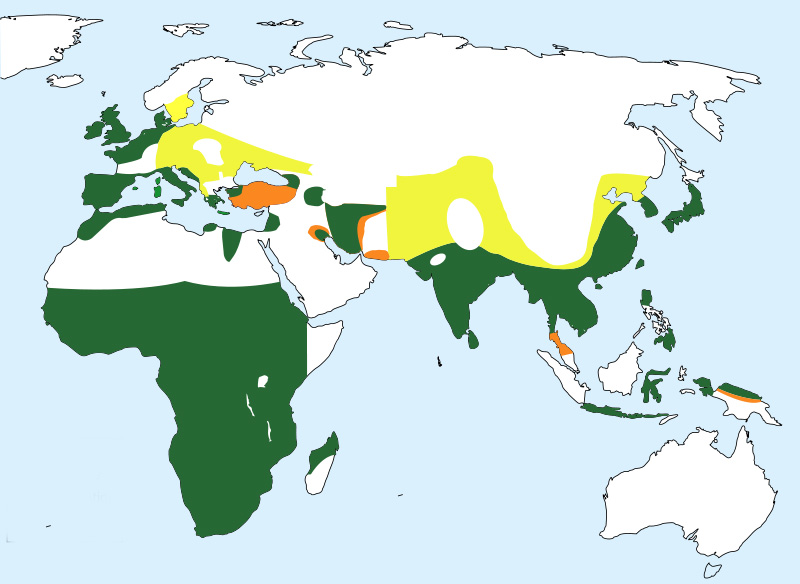
Animaux similaires
Nouvelles photos d'animaux
Top 10 des animaux
- Dolphin gull (Leucophaeus scoresbii)
- Diana monkey (Cercopithecus diana)
- Moustached guenon (Cercopithecus cephus)
- Galápagos tortoise (Geochelone nigra complex)
- Russian tortoise (Testudo horsfieldii)
- Japanese macaque (Macaca fuscata)
- Stone loach (Barbatula barbatula)
- Greek tortoise (Testudo graeca)
- Common flying dragon (Draco volans)
- Colossal squid (Mesonychoteuthis hamiltoni)
